PRE FINAL PRACTICAL (45 year old male with giddiness) LONG CASE
Presenting complaints : 45 year old male who is a resident of Narketpalli driver by occupation , came to the casuality who studied till degree came with complaints of :
Giddiness since yesterday afternoon
vomiting’s 4 episodes since afternoon
shivering since afternoon which lasted till he was brought to the hospital subsided on medication .
HOPI & PAST HISTORY :
He’s the last child in his family .
Mother and father expired at 20 years , mother expired because of paralysis . Father expired because of ? Renal issues .
Marriage : consanguinity ( first degree ) at 20 years survived with 2 kids (2sons ) one son is intern completed and other is working in hyd in a laboratory.
20 years back he worked in an pharmacy for 3-4 years , then he owned his own auto and drove for 3-4 years , later he brought his car gave it for trips ,and he worked a private driver , and also used to drive hens to chicken shop , He’s an night driver , he used to leave home at 7:30 pm and come back next day 9:30 am
After drinking alcohol and used to sleep till evening without eating food .
Patient was apparently asymptomatic 4 months back, then he had shortness of breath grade 2-3 , which was associated with fever and chills , associated with dry cough for 4 days was brought to our hospital and was diagnosed with Community acquired pneumonia and was treated accordingly and got discharged after 4 days .
Chronic alcoholic since 18 years and Chronic smoker since 18 years (1pack/day ) non diabetic and non hypertensive .
His drinking increased since 2 months after his sons suicide due to betrayal by his close friends , was admitted in our hospital and got discharged .
Now , presenting with complaints of giddiness which is postural and associated with vertigo and not associated with tinnitus and shivering since afternoon which was subsided after coming to hospital , lasted for 1 hour approx.
Vomitings 3 epiosdes non bilious, non projectile , butter milk as content , non foul smelling and non blood tinged .
On examination :
Patient is drowsy but arousable .
Afebrile to touch (Temp : 98.5F)
Bp : 130/80mmhg
Pulse : 84bpm regular , normal volume
CVS : s1s2 + no murmur
P/A : soft , no organomegaly
Spo2: 98% RA
GRBS :(105mg/dl)
Personal history : mixed diet, appetite reduced
Regukar bowel and bladder movements
Smoker since 18 years ( daily one pack / day )
Family history : mother is hypertensive, expired due to cva after bedridden for 6 months .
Drug history : NONE
CNS : patient is oriented to time , place and person drowsy but arousable
Right handed person , speech : normal , no deviation of mouth , no sluuring of speech .
MMSE : couldn't be elicited as patient was drowsy
GCS: 15/15
Cranial nerves : I) Sense of smell : couldn't be elicited
II) Visual acuity : NORMAL
b.Colour vision: couldn't be elicited as patient was drowsy
c. Fundus: couldn't be elicited as patient was drowsy
III) EOM:
Pupil size: 2-3mm (Right) 2-3mm (left)
No Ptosis
Nytagmus present + bilateral ( horizontal nystagmus + horizontal ) R>L
NO DEVIATION OF MOUTH , FROWNING NORMAL
Rinnes : air conduction >bone conduction
webers : no laterisation
IX , X: No deviation of uvula
XII: SHRUGGING OF SHOULDERS NORMAL
XII: MOVEMENT OF TONGUE NORMAL
NO WASTING OF TONGUE /FASICULATIONS
MOTOR :
BULK : NORMAL
Tone : Right Left
Upper limb N N
Lower limb N N
Power :
Upper limb : N N
Lower limb : N N
Motor :
Biceps : 2+ 2+
Triceps : 2+ 2+
Supinator : 2+ 2+
Knee jerk : 2+ 2+
Ankle : mute
Plantar : Flexion Flexion
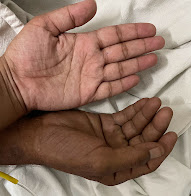



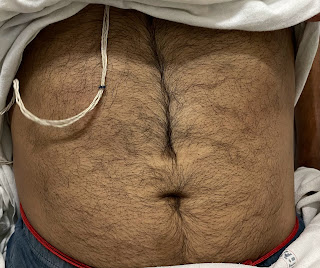




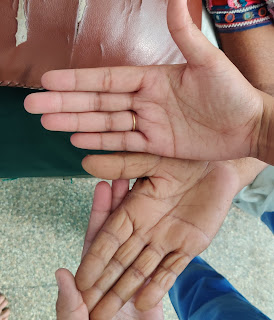
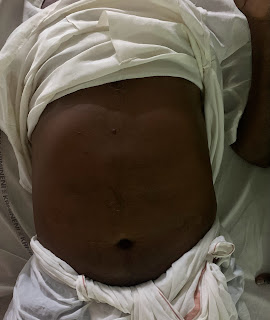
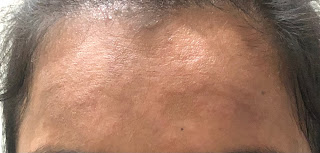
Comments
Post a Comment